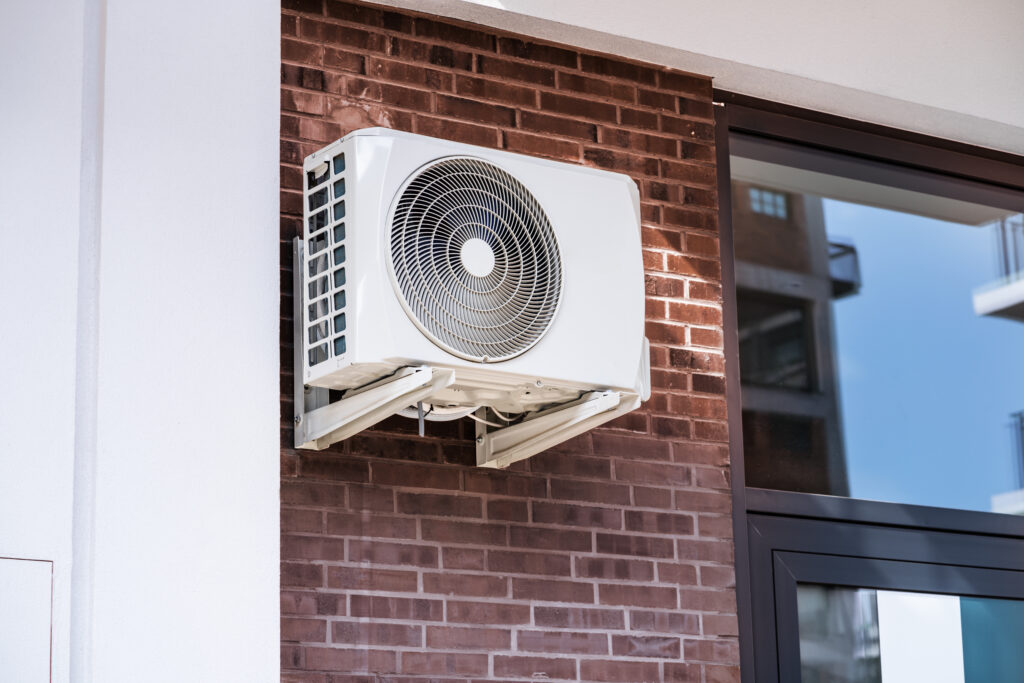Ductless mini splits are a relatively newer type of HVAC system that can be extremely useful in certain situations. For instance, a mini-split system can be a great choice for additions as this type of system will typically be cheaper than running ductwork to the addition and connecting it to your central HVAC system. That being said, there are many situations where a central HVAC system will be a better choice as mini splits do have their downsides as well. To help you understand if a mini-split system is right for you, here is an overview of what these systems are, how they work, and also the pros and cons of using a mini-split system.
What Is a Ductless Mini-Split System?
Central air conditioning systems are often referred to as split systems because they have an exterior component (the outdoor AC compressor unit) and an internal component (the AC evaporator coil and air handler). This is also where mini-split systems get their name as they are basically just a smaller, self-contained type of split system with an outdoor compressor unit and one or more interior air handlers.
One thing many people may not understand about mini-split systems is that the outdoor unit is actually a heat pump. This means that it can reverse the direction that the refrigerant flows through the system to provide both cooling and heating, just like a central heat pump can. The only difference between a mini-split system and a central heat pump is that a central unit relies on a central air handler and ductwork to circulate hot and cold air throughout the building whereas mini splits use individual air handlers to heat and cool individual rooms or spaces. This is why they’re referred to as ductless systems since each mini-split air handler draws air in from the surrounding area and then pumps the heated or cooled air back out into that space.
Mini-split systems can be either single-zone or multi-zone systems. A single-zone system has only one air handler, which means it can only heat and cool one area or zone. Most single-zone systems can effectively heat and cool an area of up to 500 square feet. This type of system can be the perfect choice if you’re looking to add heating and cooling to your garage or any other areas that aren’t connected to the building’s central HVAC system. Single-zone systems are also perfect for sheds, workshops, and cabins, or even a small house. This type of system can also be extremely useful for supplementing your existing cooling or heating, like if you have any areas of your home that always stay hotter or cooler than the rest of the building.
Most multi-zone systems can have up to four air handlers that run off the same outdoor unit, but some systems can run up to eight air handlers. With this type of system, you could potentially heat or cool your entire home. However, there are some limitations in terms of how far away each air handler can be from the outdoor compressor and also the total combined length of all of the refrigerant lines. This is because the compressor is only so powerful and can only pump the refrigerant a certain distance.
Most systems require each air handler to be no more than 75 feet away from the compressor, and the total maximum length of all of the refrigerant lines is usually somewhere between 200 and 275 feet, depending on the size of the compressor. These limits mean that there are times when you would need more than one system to heat and cool a larger building.
How Ductless Mini-Splits Work
Mini-split systems work just like a central heat pump by using refrigerant to transfer heat energy from one area to another. When cooling, the fan in the air handler pulls warm air in from the surrounding area. As this air is forced over the refrigerant-filled evaporator coil, much of the heat energy in the air is transferred to the refrigerant. This results in the air blowing out of the unit being somewhere around 20 degrees cooler than the air that’s drawn into the system.
The heated refrigerant is then pumped back outside to the compressor, and the condenser coil and compressor fan then work to release all of the stored heat in the refrigerant into the air outside. As the system runs, cold refrigerant constantly flows from the compressor to the air handler, and hot refrigerant flows back from the air handler to the compressor.
Mini-split systems use this same heat transfer process when heating. The difference is that the refrigerant flows in the opposite direction. This means that cold refrigerant flows through the condenser coil in the compressor unit and absorbs heat from the outdoor air. The refrigerant then moves through an expansion valve, which instantly raises the temperature and decreases the pressure of the refrigerant so that it transforms into a hot gas. This hot gas is then pumped to the air handler, which continuously draws cooler air in from the surrounding area. Due to the nature of the heat transfer process, all of the heat in the refrigerant then flows out and heats the air being drawn into the air handler.
Mini-split systems are generally most effective at heating when the outdoor air temperature is above freezing. However, most systems can continue to work at even below-zero temperatures as there is still some heat energy in the air for the system to absorb even at extremely low temperatures. However, mini splits will always need to occasionally defrost when heating as the heat transfer process causes condensation to form on the coil in the outdoor unit. This leads to frost forming and ice beginning to build up, which insulates the coil to where the refrigerant can no longer absorb heat. When defrosting, the system again switches the direction of the refrigerant flow so that hot refrigerant moves through the outdoor unit to melt all of the ice.
Mini Split Pros and Cons
As with any other HVAC system, there are both good sides and bad sides to using a mini-split system. Mini splits are extremely efficient and, in fact, are typically the most energy-efficient heating and cooling option available. They also take up much less space than a central HVAC system. That being said, the air handlers can be a bit bulky and you’ll need to have one mounted on the wall, floor, or ceiling in each room.
Another major advantage of mini-split systems is that they’re easy to install and don’t require any extensive construction. After mounting the outdoor unit, all the technician needs to do is cut a small hole in an exterior wall and then run the refrigerant lines and power supply between the indoor and outdoor units. This means that the total installation and labor costs tend to be much lower for a mini split compared to other HVAC units.
Despite the lower installation cost, mini-split systems still tend to be quite expensive. On average, a multi-zone mini-split system will cost around 30% more than a similar-sized forced air heating or cooling system. Many people also don’t like the bulky appearance of the air handler hanging on the wall. You can choose to hide the air handlers by having them recessed into the ceiling, but that can add quite a bit to the installation cost.
Another issue is that mini splits require a bit more regular maintenance than ducted systems. To work effectively, you typically need to wash and clean the reusable air filter in each air handler monthly instead of just replacing the air filter every two to three months as you do with a central HVAC system.
One other thing to consider is that mini-split systems are typically not all that effective or efficient in extreme temperatures. Any time the outdoor temperature is below freezing or above 90 degrees, the efficiency of the system tends to decrease as it will need to run almost constantly to effectively heat or cool.
[company_name] is a full-service HVAC company that installs, services, and repairs mini-split systems as well as HVAC systems. We also specialize in residential plumbing and electrical services for customers in Twin Falls, Jerome, Boise, and throughout the Magic Valley and Treasure Valley areas. Give us a call today if you have any questions about mini splits or need to schedule any home service.


